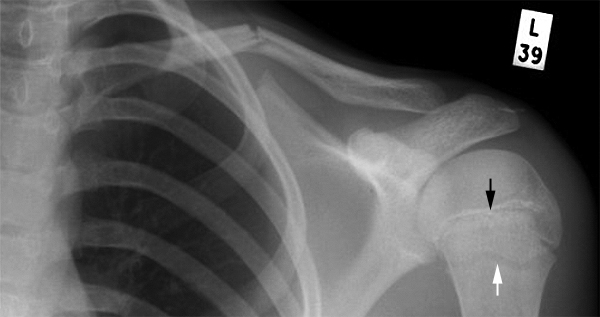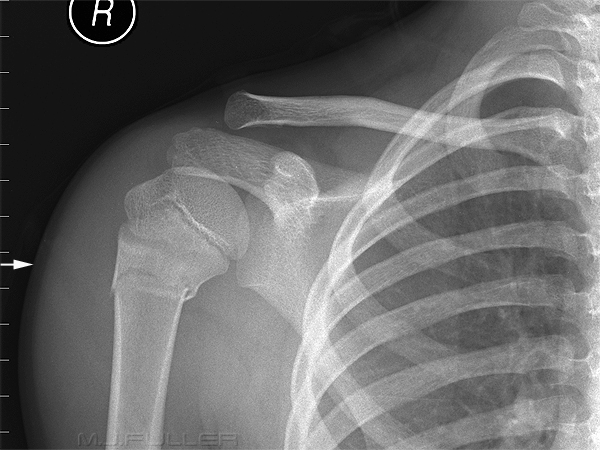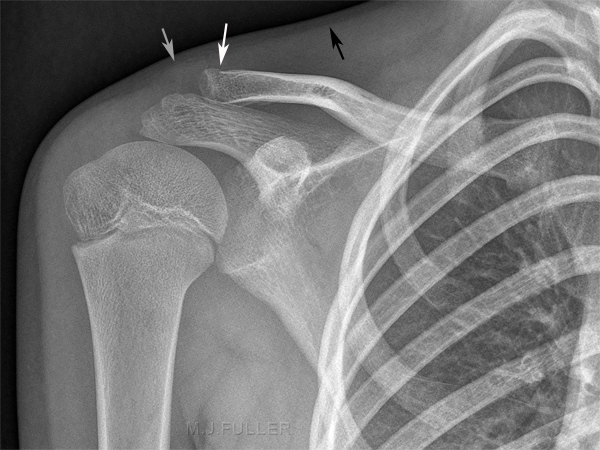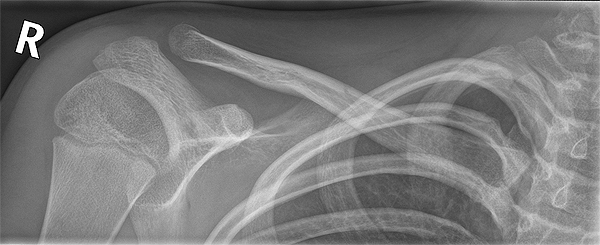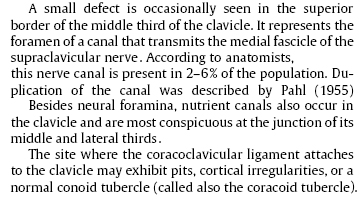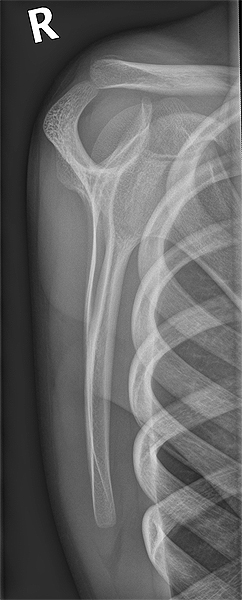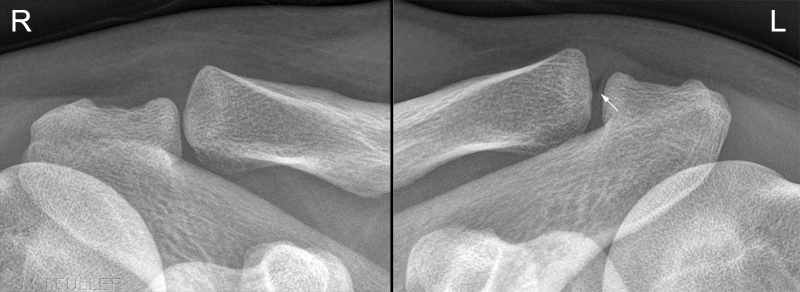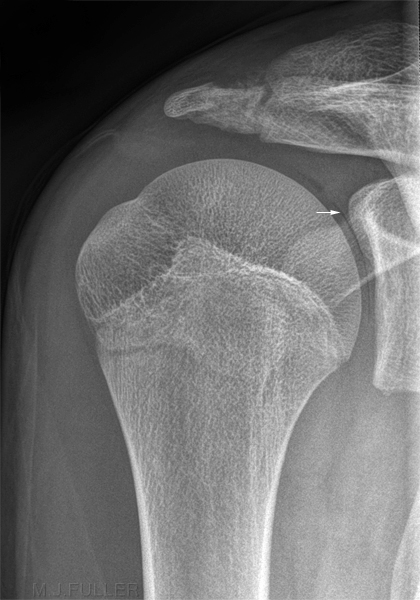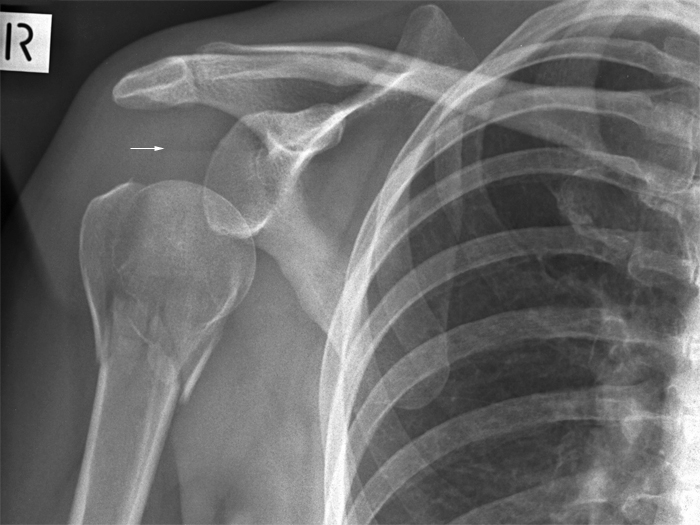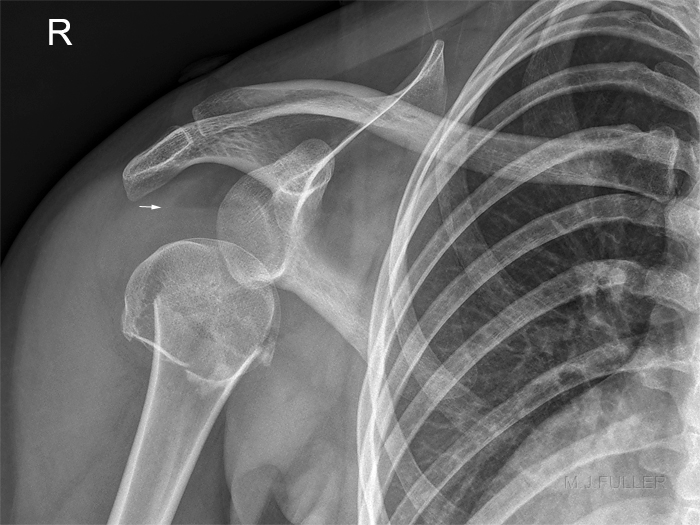Soft Tissue Signs- Shoulder
Jump to navigation
Jump to search
Introduction
The Normal Humeral Epiphysis
Subcutaneous Fat Sign
Vacuum Phenomenon
Lipohaemarthrosis
... back to the Applied Radiography home page
Introduction
Soft tissue signs can assist in differentiating normal bony anatomy from an acute bony injury. This page considers soft tissue signs associated with the shoulder.
The Normal Humeral Epiphysis
I have seen a normal paediatric proximal humeral epiphysis reported as a fracture on several occasions. In such cases, an examination of the adjacent soft tissues would suggest that no fracture was present.
The arrowed structures are actually a single structure (proximal humeral epiphysis). The proximal humeral epiphysis appears to be two structures for several reasons-
- The proximal humeral epiphysis is "V" shaped and one side of the "V" is seen en face(ish) and the other side of the "V" is visualised in profile (ish).
- The other deceptive aspect is that one side of the "V" appears to have a sclerotic margin (black arrow) and the other doesn't(white arrow).
<a class="external" href="http://www.e-radiography.net/" rel="nofollow" target="_blank">http://www.e-radiography.net/</a>
This image can help in understanding the nature and shape of the proximal humeral epiphysis. This patient has a Salter Harris I injury to the proximal humeral epiphysis.
CommentA normal proximal humeral epiphyses should not be mistaken for a fracture. Examination of the adjacent soft tissues and consideration of the mechanism of injury and clinical signs should further support the diagnosis.
Subcutaneous Fat Sign
The dedicated clavicle image also demonstrates the cortical step and the associated soft tissue sign. Note also the midclavicular canal for the middle supraclavicular nerve
<a class="external" href="http://www.buchhandel.de/WebApi1/GetMmo.asp?MmoId=2998578&mmoType=PDF" rel="nofollow" target="_blank">Source: Koehler/Zimmer's Borderlands of Normal and Early Pathological Findings in Skeletal Radiography, Thieme, 2003, 5th Edition, p307</a>
Vacuum Phenomenon
Lipohaemarthrosis
... back to the Applied Radiography home page
